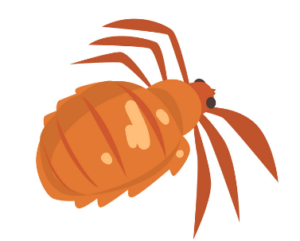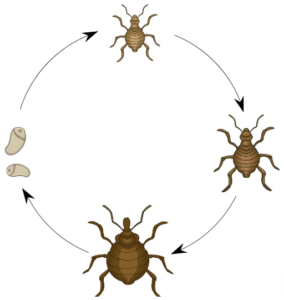As the CDC says, head louse or Pediculus humanus capitis, is an insect of the order Psocodea and is an ectoparasite whose only host are humans. The louse feeds on blood several times daily and resides close to the scalp to maintain its body temperature.

We are its only food source! the head louse cannot spread to pets, live forever, or cast spells.
Where does it live?
Head lice and head lice nits are found almost exclusively on the scalp, particularly around and behind the ears and near the neckline at the back of the head. Head lice or head lice nits sometimes are found on the eyelashes or eyebrows but this is uncommon. Head lice hold tightly to hair with hook-like claws at the end of each of their six legs. Head lice nits are cemented firmly to the hair shaft and can be difficult to remove even after the nymphs hatch and empty casings remain.
Head Louse Life Cycle

The life cycle of the head louse has three stages: egg, nymph, and adult.
Eggs: Nits are head lice eggs. They are hard to see and are often confused for dandruff or hair spray droplets. Nits are laid by the adult female and are cemented at the base of the hair shaft nearest the scalp. They are 0.8 mm by 0.3 mm, oval and usually yellow to white. Nits take about 1 week to hatch (range 6 to 9 days). Viable eggs are usually located within 6 mm of the scalp.
Nymphs: The egg hatches to release a nymph. The nit shell then becomes a more visible dull yellow and remains attached to the hair shaft. The nymph looks like an adult head louse, but is about the size of a pinhead. Nymphs mature after three molts and become adults about 7 days after hatching.
Adults: The adult louse is about the size of a sesame seed, has 6 legs (each with claws), and is tan to grayish-white. In persons with dark hair, the adult louse will appear darker. Females are usually larger than males and can lay up to 8 nits per day. Adult lice can live up to 30 days on a person’s head. To live, adult lice need to feed on blood several times daily. Without blood to eat, the louse will die within 1 to 2 days off the host.